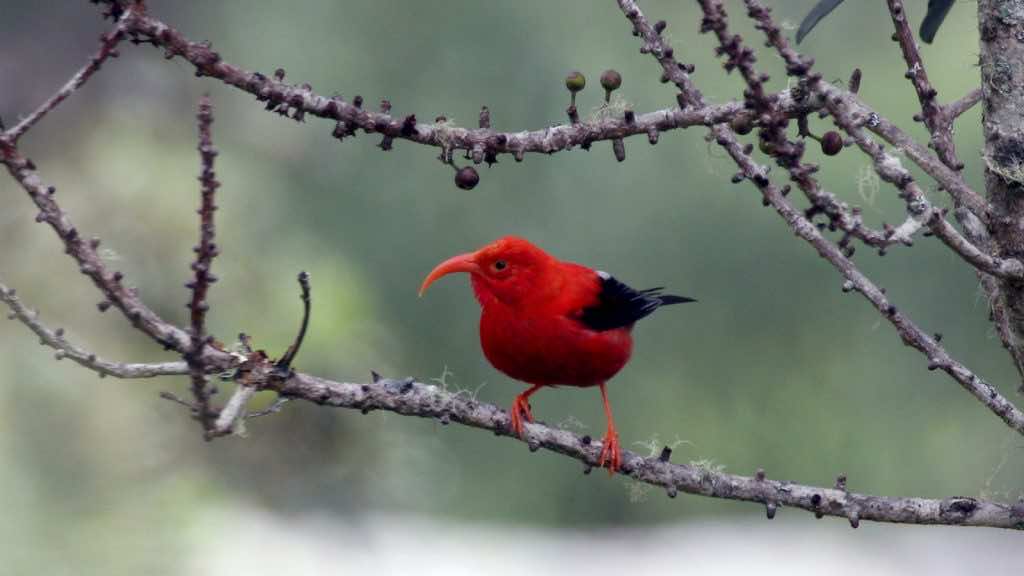Hawaii is known as the extinction capital of the world. A huge number of 434 species of birds and animals living on the island have been classified as the endangered organisms. The scientists are now planning to employ genetic engineering to overcome the loss of more than half the species of the native Hawaiian island.
The Bird Crash
The Kauai Island has suffered a massive loss of native population of rare species of birds. Eben Paxton had termed the loss to be the “bird crash”. Paxton is a renowned ecologist working with the U.S. Geological Survey and has reported a significant loss of the bird population.
The Hawaiian Islands are characterized by their unique isolation, implying that the unique native creatures of the archipelago were not able to adapt and thus, fend off the threats brought in by the settlers in the land.
The major culprit behind the decline of the avian population and rare bird species in Hawaii is the avian malaria caused by Culex quinquefasciatus, the southern mosquito. Initially, the birds tried to delay the imminent doom by retreating to 4000 feet or above, where the temperature is too low for the mosquitos to follow.
However, the climate changes have resulted in higher temperatures in these previously safe heavens as well, bringing the threat of the mosquitoes in its tow. On the other hand, the terrain of Kauai lacks any geographical feature which may offer a safe, high altitude to the birds. Therefore, the bird population of the small island is nearly on the verge of extinction. The wildlife officers are keeping some birds including the honey-creepers in confinement to ensure their safety.
To ease the plight of the birds, the government has sought the help of the scientists to look for a customized high-tech way out by using the genetically modified mosquitoes. The modified mosquitoes will produce an offspring population that will die prematurely, thus reducing the number of mosquitoes drastically. It must be mentioned here that the modified DNA only results in population reduction but does not imply complete extermination of the entire species.
Mosquito Technology
The mosquito technology was recently brought into the limelight in the context of the Zika virus, where it is being used to alleviate the human suffering. Oxitec is one of the companies that are at the forefront of this technology and have used it to successfully curb Zika in Brazil.
It is not the first time that the genetic engineering will be employed to conserve flora and fauna. In the past, the relevant methods have been adopted to protect the White Rhinoceros and the American Chestnut Tree. Oxitech is also on refashioning the DNA of the Southern mosquito, and the results thus far have shown considerable promise, given the varying and rugged terrain of Hawaii Islands. He pitched his idea to the conservation ecologists where it was given a warm reception. Dennis LaPointe, a mosquito scientist voiced the general public opinion about the mosquito technology stating:
“People loved it. This was the first time anyone had proposed anything that could change the whole discussion. It got people thinking that molecular techniques are the way to go.”
As opposed to the huge time and money constraints, involving 30 years and $2.5 billion, required for relocation and habitat restoration to preserve species, the genetic modification of mosquitoes is more economical and quicker solution.
The Future of Mosquito Technology
The major debate following the proposal of using genetically modified mosquitoes for the preservation of the Hawaiian birds speculates on the potential outcomes of the large scale use of the technique. Other debates have argued upon the method of deploying these modified mosquitoes over such a large area.
Another genetic technology, called gene drive is also in the works. Gene drive follows a model where the reproduction of the mosquitoes will result in the spreading of a gene that eventually exterminates the mosquitoes completely. The high-tech fix will be used to curb malaria in the African countries, but can also be used in other scenarios such as that of the Hawaiian archipelago.
Do you agree that the genetic engineering should be employed on such a massive scale? Let us know in comments.

